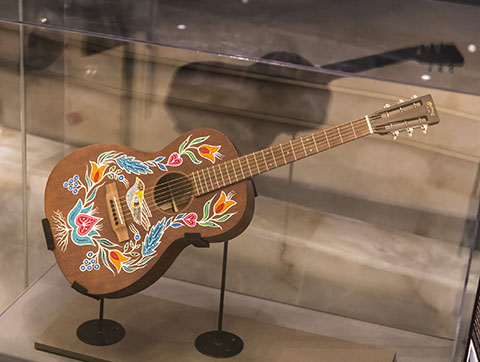Truth and Reconciliation
gal_TRC_DS_2531_raw_1_610x407.jpg

For over a century, the Indian Residential School system in Canada violated the rights of First Nations, Inuit and Métis children. Canada’s Truth and Reconciliation Commission (TRC) was established in 2008 with the goal of contributing to truth, healing and reconciliation. The TRC hosted public events, gathered statements from survivors, and collected documents to create a historical record. In June 2015, the TRC concluded the residential school system was a form of cultural genocide and delivered 94 calls to action to redress this legacy.
A Gesture of Reconciliation
An exhibit about the TRC in the Level 7 Inspiring Change gallery displays a beautifully hand-painted guitar from the National Centre for Truth and Reconciliation collection. The guitar was gifted to the TRC on behalf of the Jesuits in English Canada as a gesture of reconciliation.

Painted by Métis artist Christi Belcourt, it symbolizes how music was an escape for students in residential schools. The guitar also represents how survivors use music for sharing their experiences and as a tool for healing.
Discover the Bentwood Box
For the past year, the exhibit displayed the beautifully carved Bentwood Box as its visual centrepiece. Made from a single piece of red cedar by Coast Salish artist Luke Marston, the box accompanied the TRC during events held across Canada, receiving diverse offerings from participants, including the ashes of tissues containing the tears of survivors.
On January 25, 2017, the Bentwood Box returned to its home at the National Centre for Truth and Reconciliation. You can discover more about significance of the carvings on the Bentwood Box through our mobile app.
Find out more about the mobile app.


In addition to this exhibit, the Museum houses four other exhibits that explore the tragic story and legacy of residential schools, which is among Canada’s most pressing human rights concerns. As a national museum and hub of human rights education, the Museum has an important role to play in efforts towards reconciliation between Indigenous and non-Indigenous people in Canada.
The Museum is working to keep the conversation alive, examine injustices and contribute to education as a powerful tool towards reconciliation.






